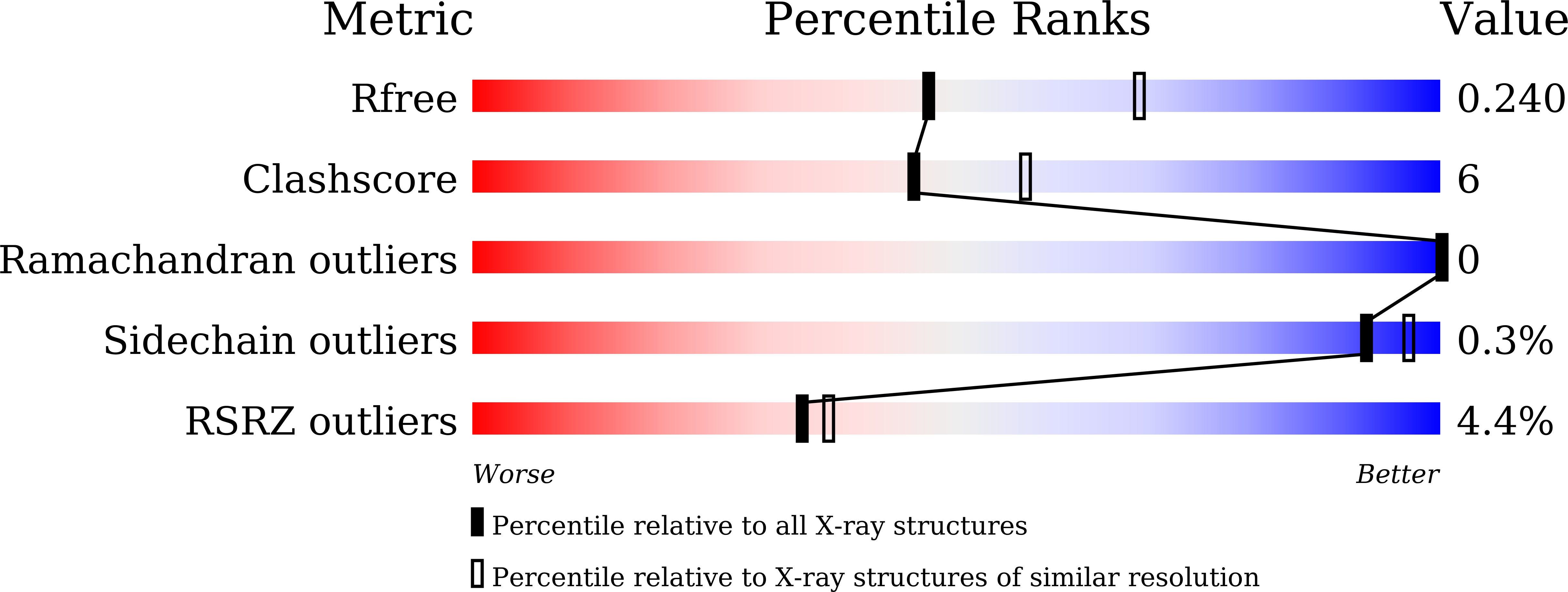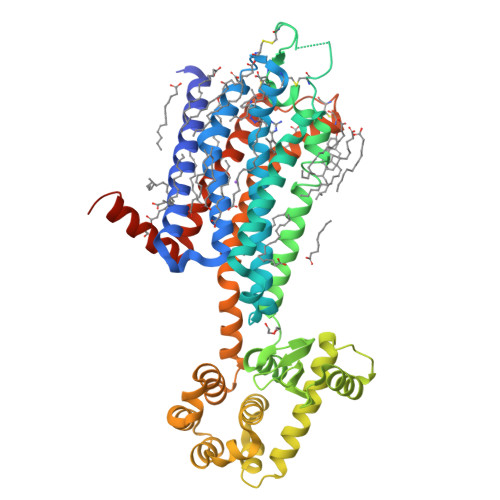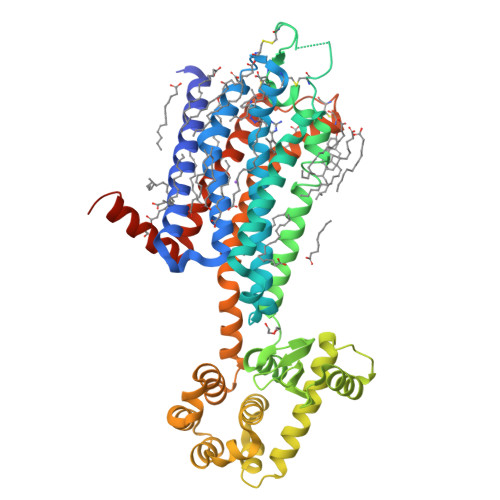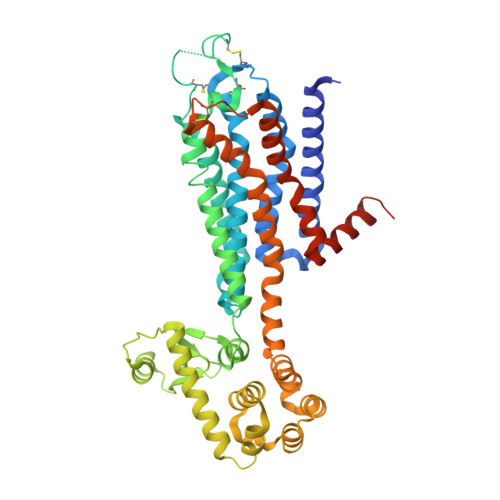Structural insight into the dual-antagonistic mechanism of AB928 on adenosine A 2 receptors.
Weng, Y., Yang, X., Zhang, Q., Chen, Y., Xu, Y., Zhu, C., Xie, Q., Wang, Y., Yang, H., Liu, M., Lu, W., Song, G.(2024) Sci China Life Sci 67: 986-995
- PubMed: 38319473
- DOI: https://doi.org/10.1007/s11427-023-2459-8
- Primary Citation of Related Structures:
8JWY, 8JWZ - PubMed Abstract:
The adenosine subfamily G protein-coupled receptors A 2A R and A 2B R have been identified as promising cancer immunotherapy candidates. One of the A 2A R/A 2B R dual antagonists, AB928, has progressed to a phase II clinical trial to treat rectal cancer. However, the precise mechanism underlying its dual-antagonistic properties remains elusive. Herein, we report crystal structures of the A 2A R complexed with AB928 and a selective A 2A R antagonist 2-118. The structures revealed a common binding mode on A 2A R, wherein the ligands established extensive interactions with residues from the orthosteric and secondary pockets. In contrast, the cAMP assay and A 2A R and A 2B R molecular dynamics simulations indicated that the ligands adopted distinct binding modes on A 2B R. Detailed analysis of their chemical structures suggested that AB928 readily adapted to the A 2B R pocket, while 2-118 did not due to intrinsic differences. This disparity potentially accounted for the difference in inhibitory efficacy between A 2B R and A 2A R. This study serves as a valuable structural template for the future development of selective or dual inhibitors targeting A 2A R/A 2B R for cancer therapy.
Organizational Affiliation:
Shanghai Key Laboratory of Regulatory Biology, Institute of Biomedical Sciences and School of Life Sciences, East China Normal University, Shanghai, 200241, China.






















